What happens when enthusiasts looking for greater performance either can’t afford the things that make big power changes, like heads, cam, intake and boost, or have already exhausted use of those items?
The answer is the same, they start looking elsewhere for power.
This—fortunately or unfortunately, depending on the outcome—is also where they resort to the internet for answers. The fortunate side is that the internet is full of advice and even results on what helps make power. People test, people talk, and we are the better for the shared information. The unfortunate side is that said internet is also chock full of opinions and even flat-out falsehoods!
We all want those magic magnets or oil treatments or vortex-generating air intake systems that promise power to deliver on those promises, but the reality is that most of them are long on promise and short on actual delivery. Little things like spark plugs, wires, and even motor oil often tease us with projected power gains, but do they really deliver? Are these areas where you should even be looking for additional performance, or are the gains so inconsequential that your time is best spent elsewhere?
Only one way to find out—quick Batman…to the dyno!
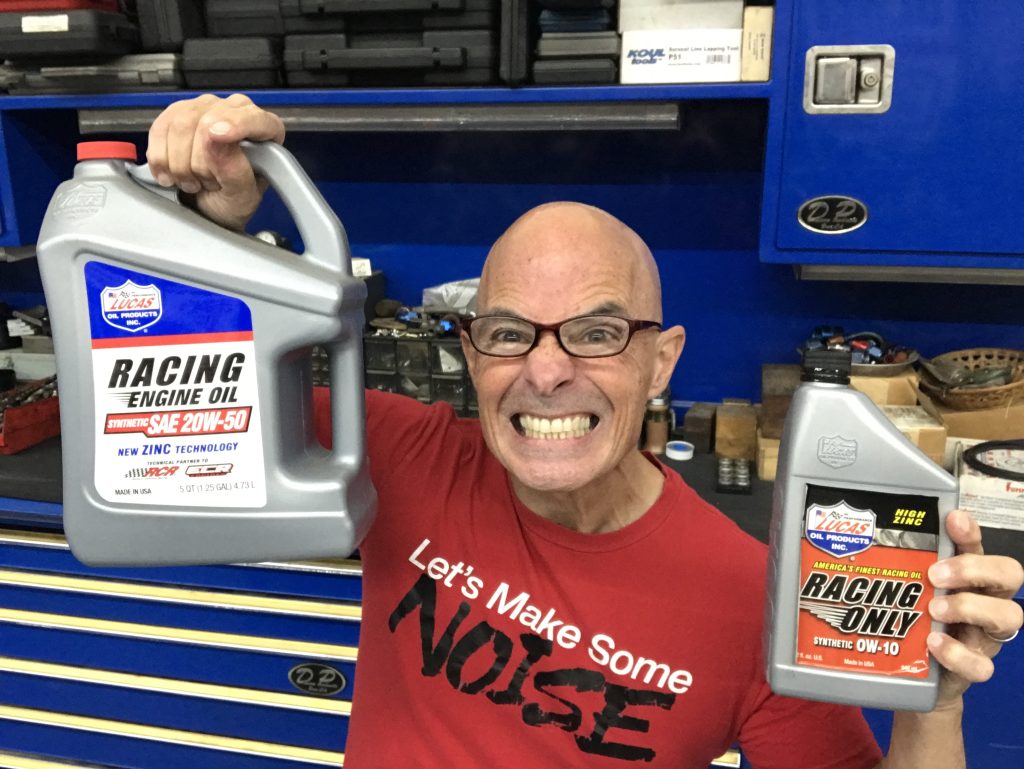
Testing Performance Benefits of Different Engine Oils & Viscosities
The list of doodads and doohickeys that magically conjure up extra power is endless, but let’s start our day with something simple like engine oil. We all know from those TV commercials that motor oil is “the life blood of any engine.” Your motor, performance or otherwise, won’t survive without it, but is there additional power to be had by choosing a trick and slick racing oil for instance? What about oil viscosity or the age-old synthetic vs. non-synthetic oil conundrum?
When it comes to making more power from different oils, is there any truth there?
To find out, we set up a series of tests, comparing four different oils (technically speaking, five are mentioned). The idea was to run a test mule (in this case a 5.3L LS) first with ordinary conventional oil, then with more expensive synthetic oil of the same weight (3W-30) from Lucas Oil. The idea being to compare synthetic vs. non-synthetic oils to see if a reduction in friction offered by synthetic oil offered any performance advantage, other than oil-life longevity (which it surely adds).
The second test was to compare oil weight. In this case, comparing a lightweight 0W-10 synthetic oil to a much heavier 20W-50 oil.
The Test Motor
Before getting to the results of each test, we need to take a look at our test motor. As stated previously, the test mule was a tried and true 5.3L LS, but not your usual (for us, anyway) iron block, run-of-the-mill base LM7.
This test motor was of the all-aluminum variety, meaning in additional to the usual array of aluminum LS heads, this 5.3L was also sporting the very desirable aluminum block. The all-aluminum L33 5.3L was a big score from a local wrecking yard, and featured flat-top pistons (a la 4.8L), high-flow 799 heads, and a slightly more aggressive cam than the base LM7 5.3L.
Over time, we had changed out the stock cam for a Red Hot cam and matching valve springs from Brian Tooley Racing, along with a FAST LSXR intake manifold and a 102mm throttle body. When combined with a set of 1-7/8 inch long-tube Hooker swap headers with collector tensions, 80 pound injectors and the Holley HP engine management system, this combo was inching closer and closer to the 500 hp mark, with peak numbers over 480 hp (with the right oil).
Our major concern for a test like this was making sure we had a repeatable combo, that produced the same power curve (not just peaks) time after time. This way, we knew that any change in power came from some external change we made (not inconsistency in the engine itself). This motor had proven to be perfectly repeatable, making it the ideal test subject when looking for what might well be minimal changes in output.
Oil Test 1: Mineral vs. Synthetic
The first test involved a comparison between the traditional conventional oil and the premium Lucas synthetic oil. We bought the cheapest oil we could find (we always look for sales) which netted us five quarts of 5W-30 STP conventional oil.
Run with a new oil filter and a 25 to 30 minute break-in and “get acquainted” session, the motor was run with both the conventional and synthetic oils with little or no change in power.
The motor produced 481 hp and 415. lb.-ft of torque.
Oil Test 2: Higher (Heavier) Oil Viscosity
After netting no gains from the synthetic oil test, we turned our attention to testing viscosity, by comparing a lightweight 0W-10 oil to heavier 20W-50 oil. In each instance, we changed the filters, ran the oil for 25 to 30 minutes (loading and unloading the motor) and brought each oil to the same temperature before starting each run.
Unlike the previous test, the oil weight had a significant change in power, with the 20W-50 dropping the peak output by 10 hp to 471 hp at 6,300 rpm. The peak torque dropped to, from 416 lb.-ft. with the 0W-10 oil to 410 lb.-ft. with the heavier 20W-50 oil.
While we would not recommend running either of these oils in your street LS (stick with 5W-30), it is interesting that the heavier oil changed the peak oil pressure by 27 psi and the attending power by 10 hp.
The lesson here…when it comes to oil, don’t go heavy in your Chevy!
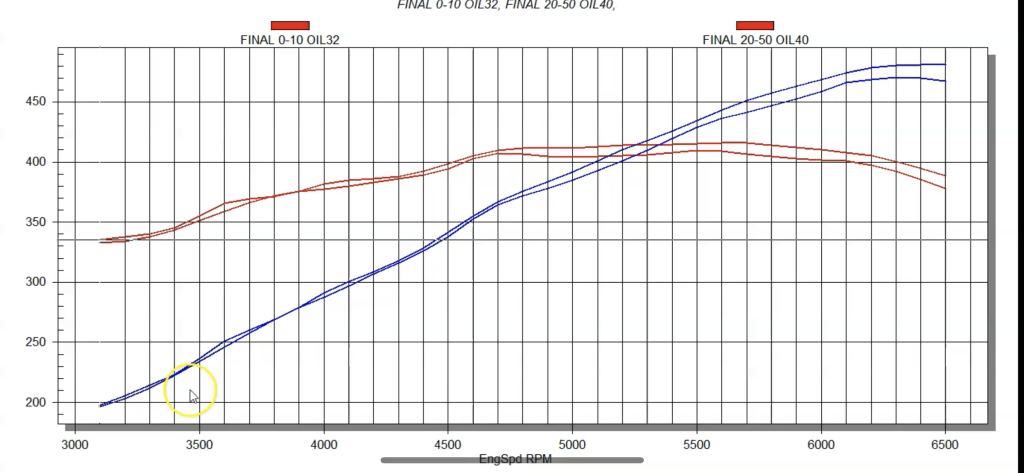
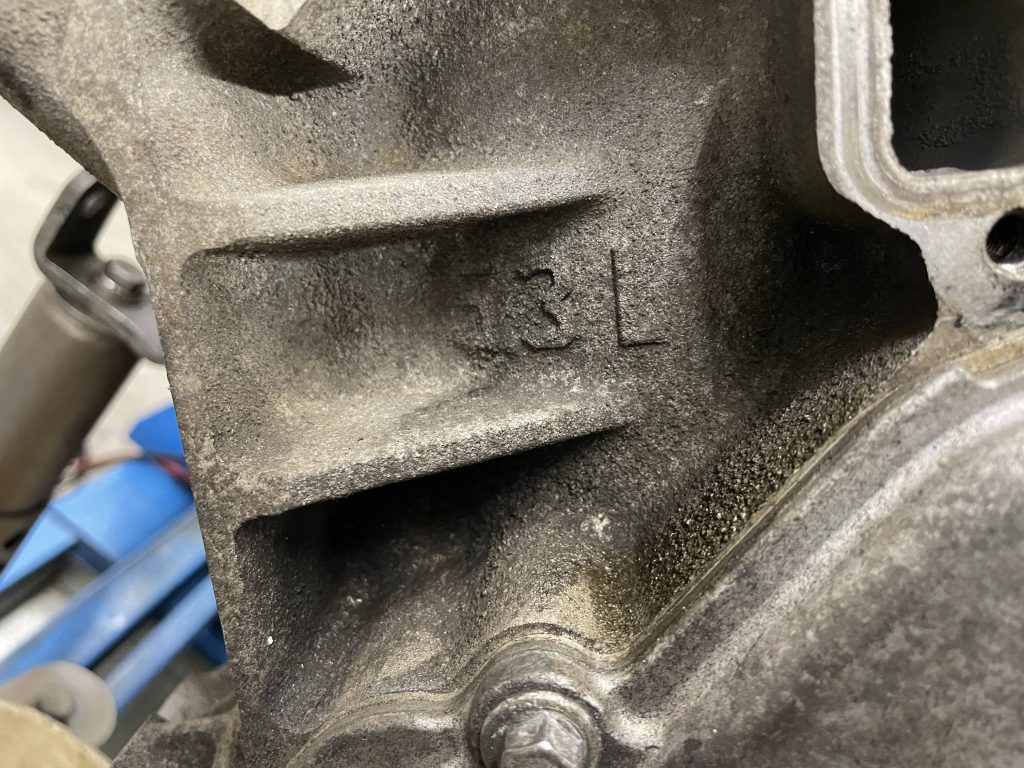
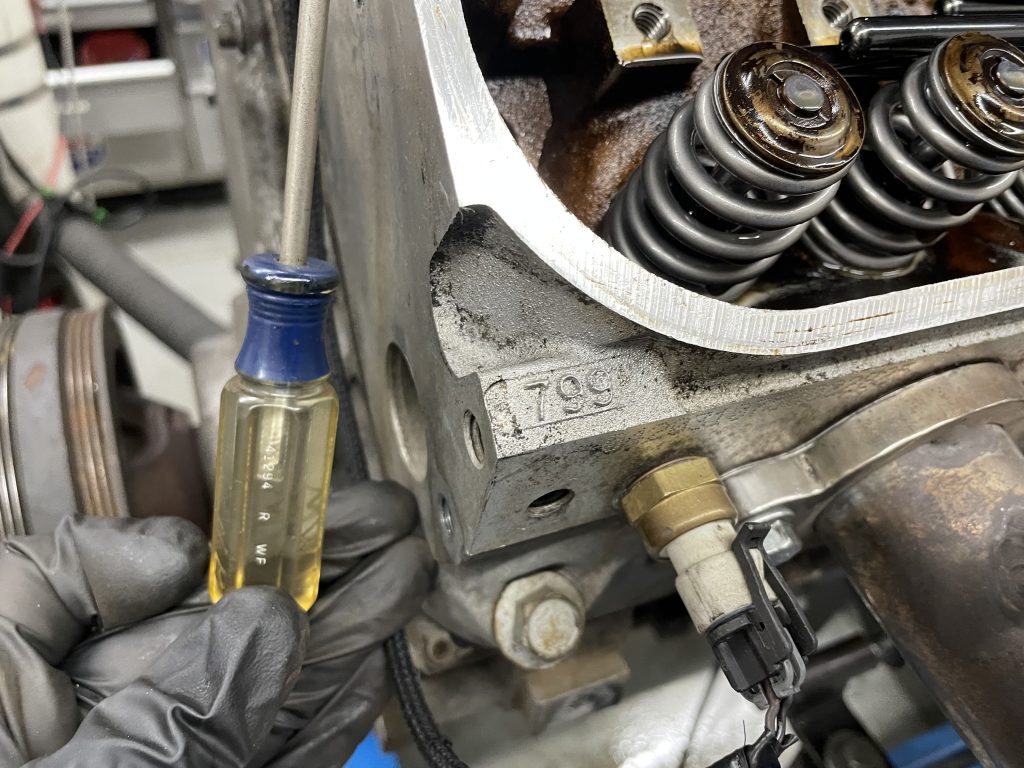
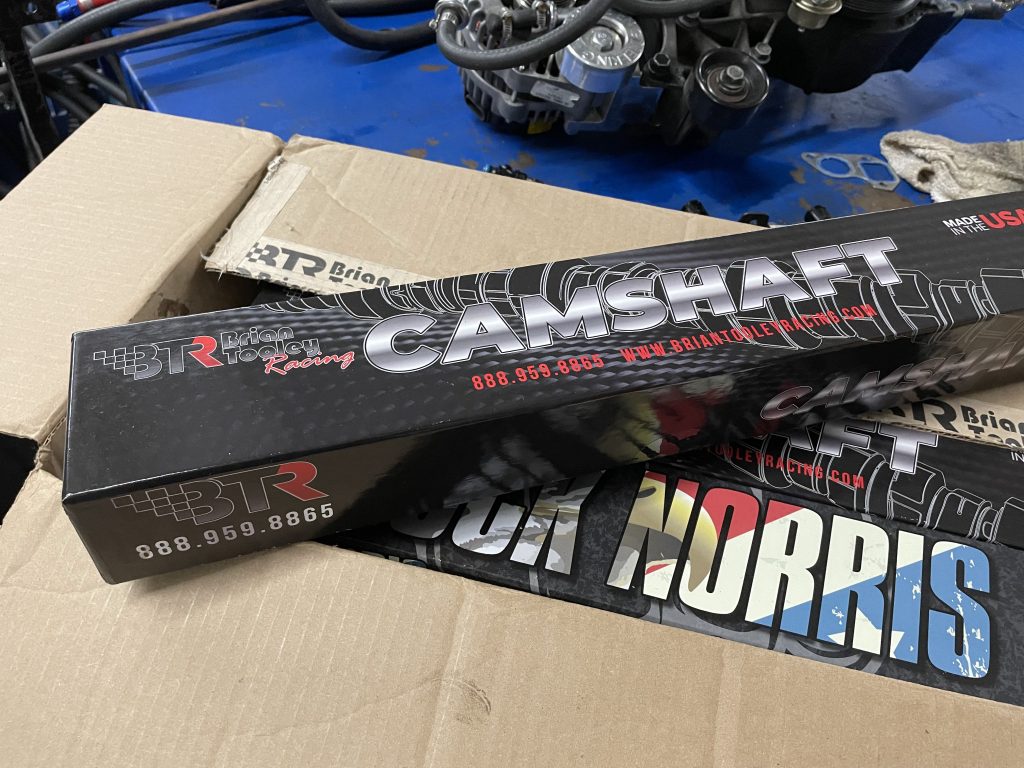
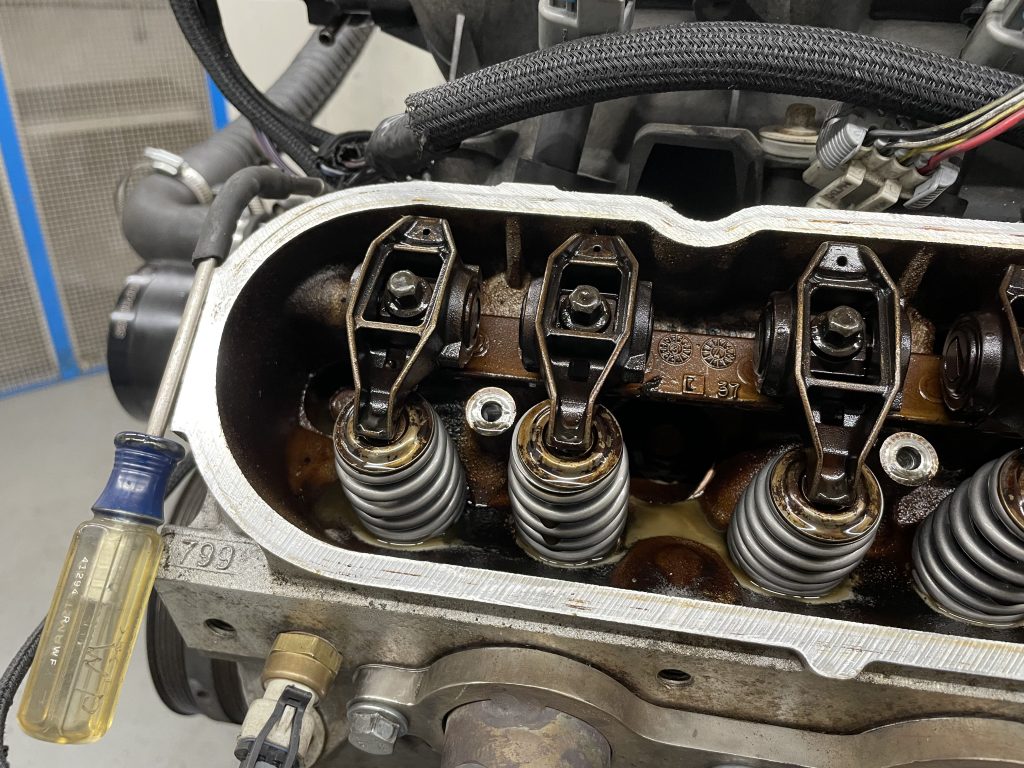
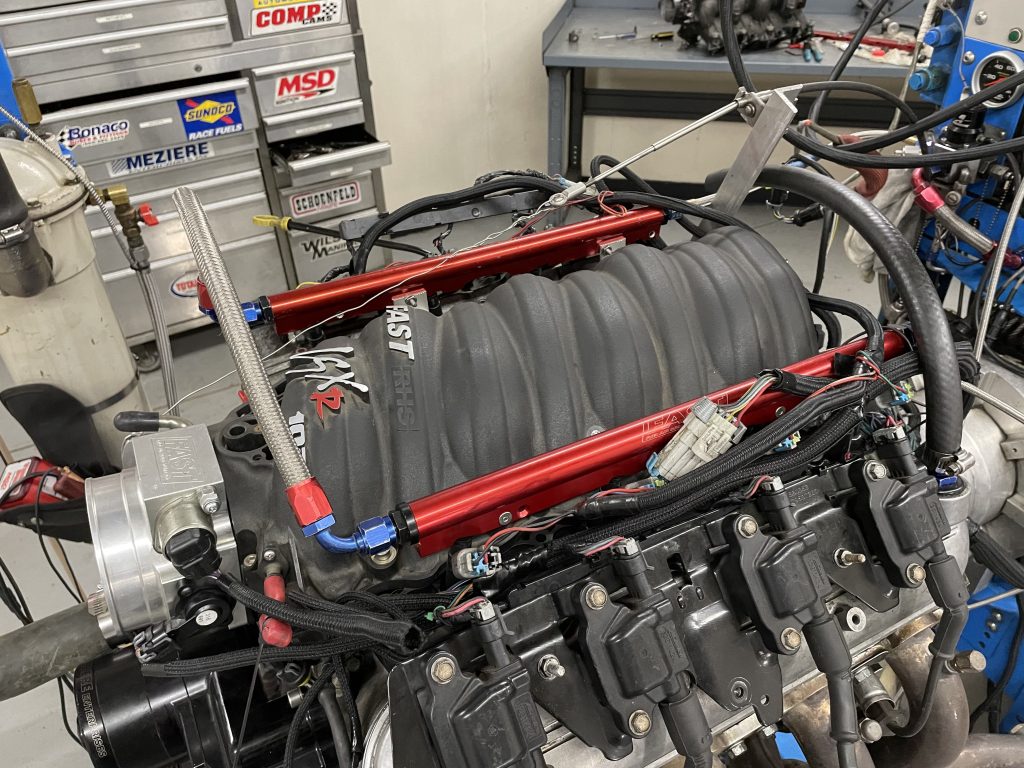
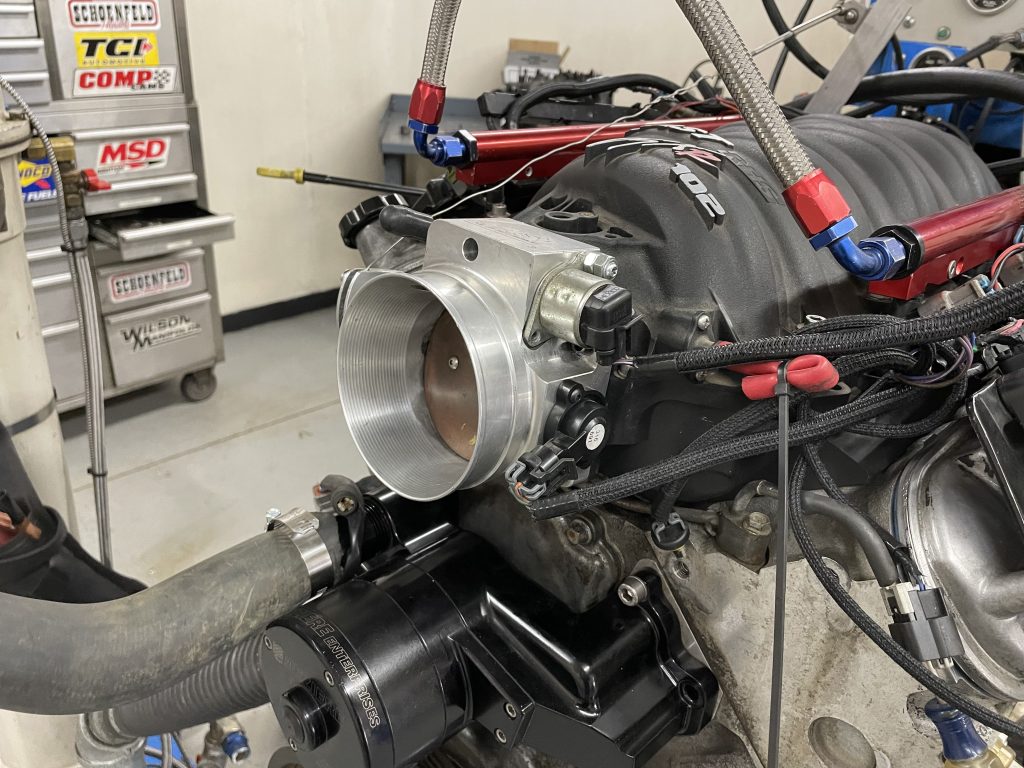

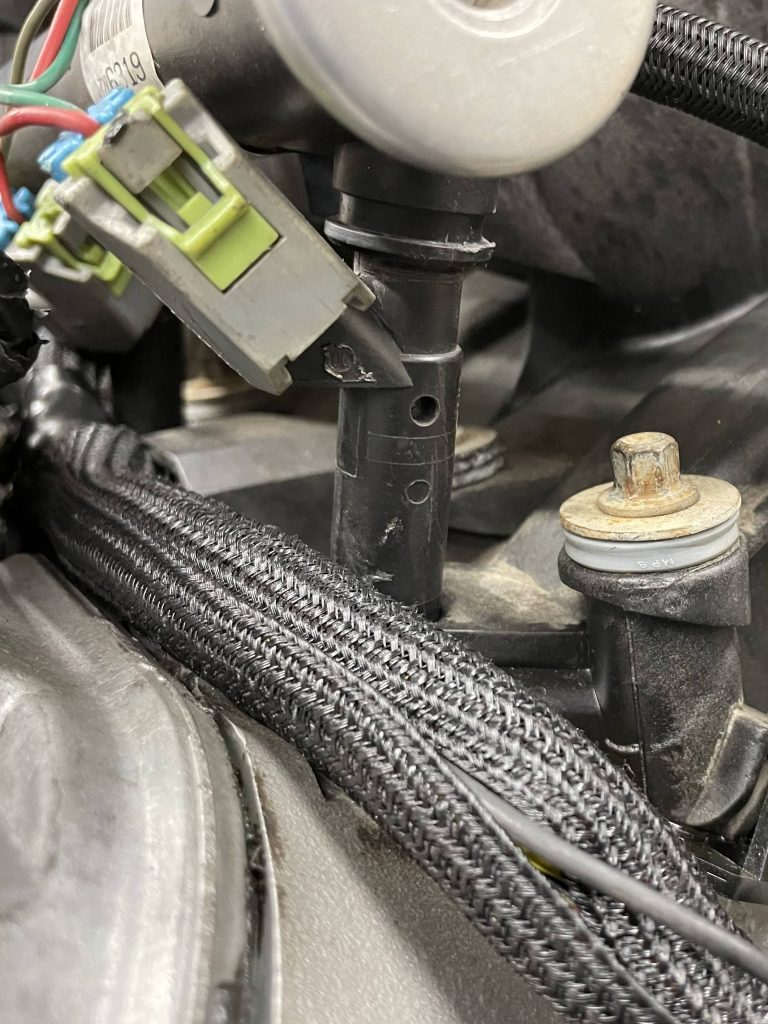
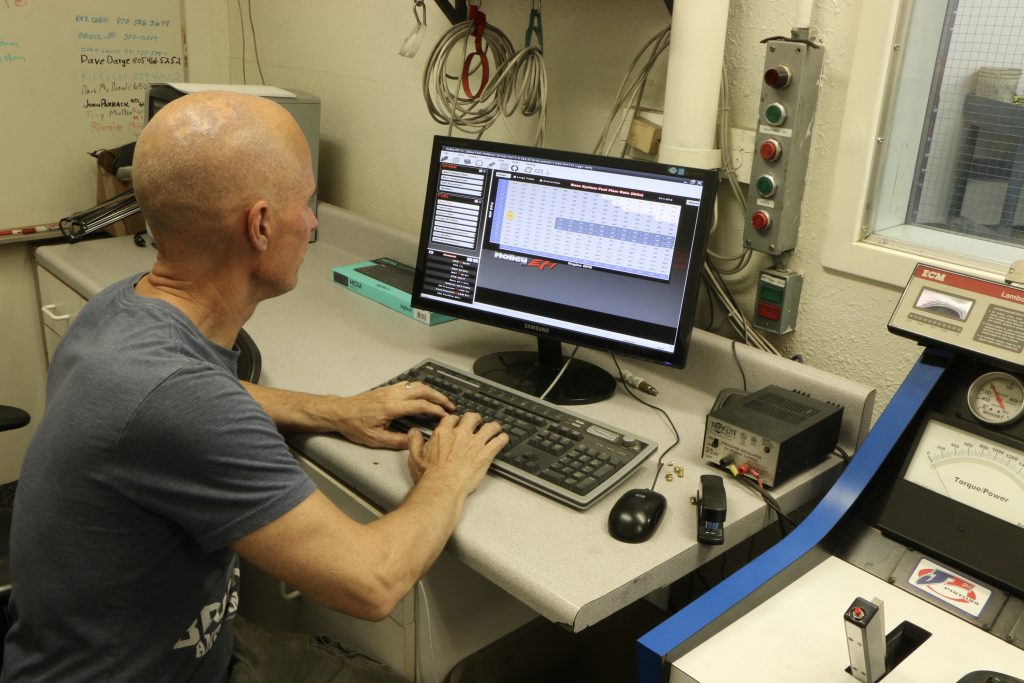
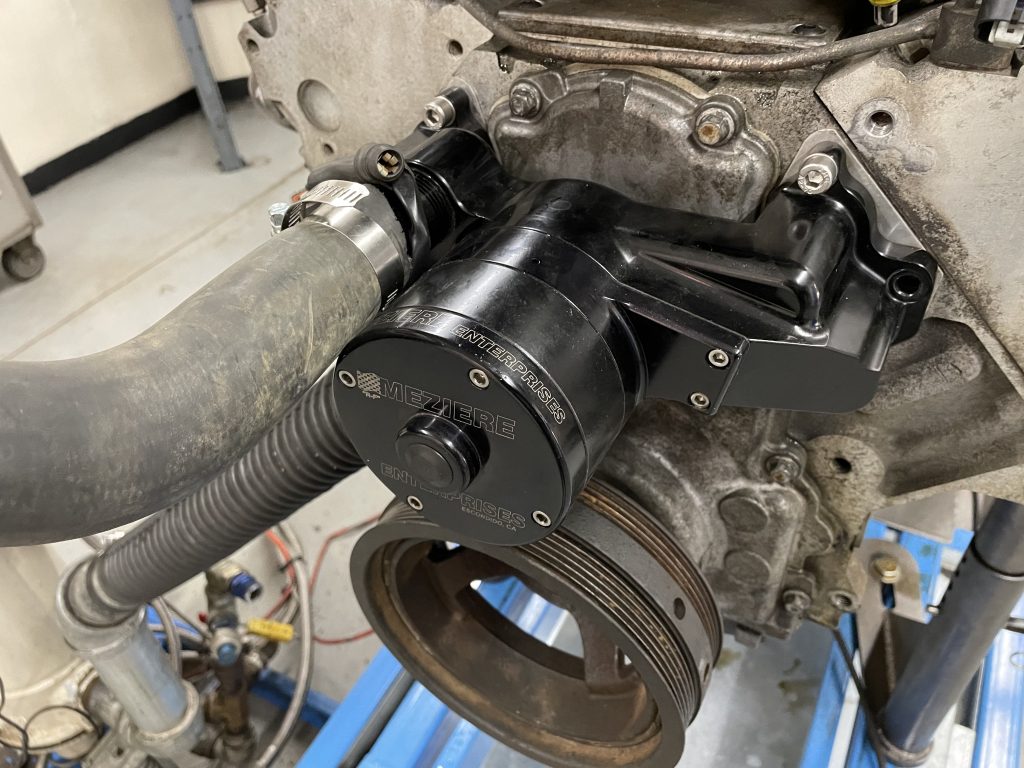
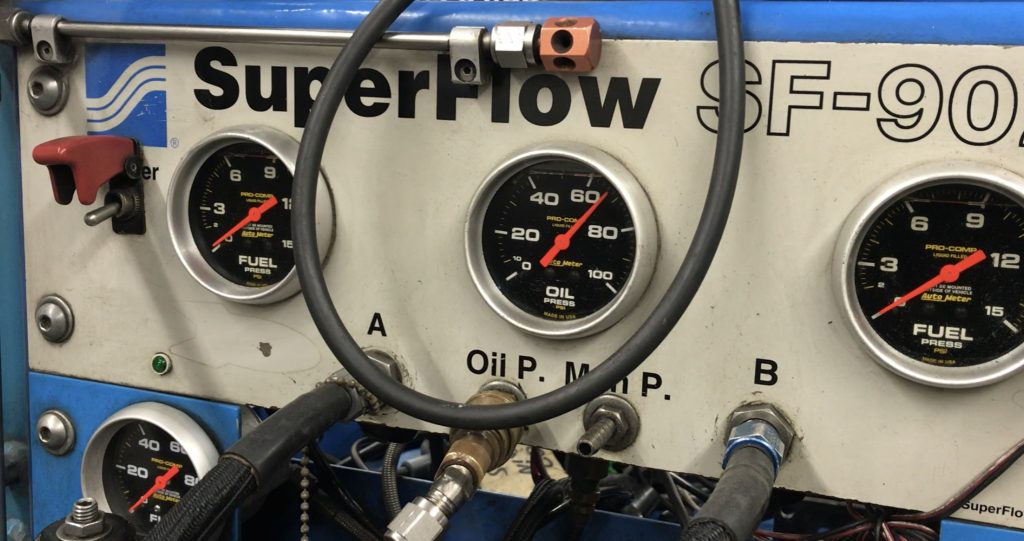
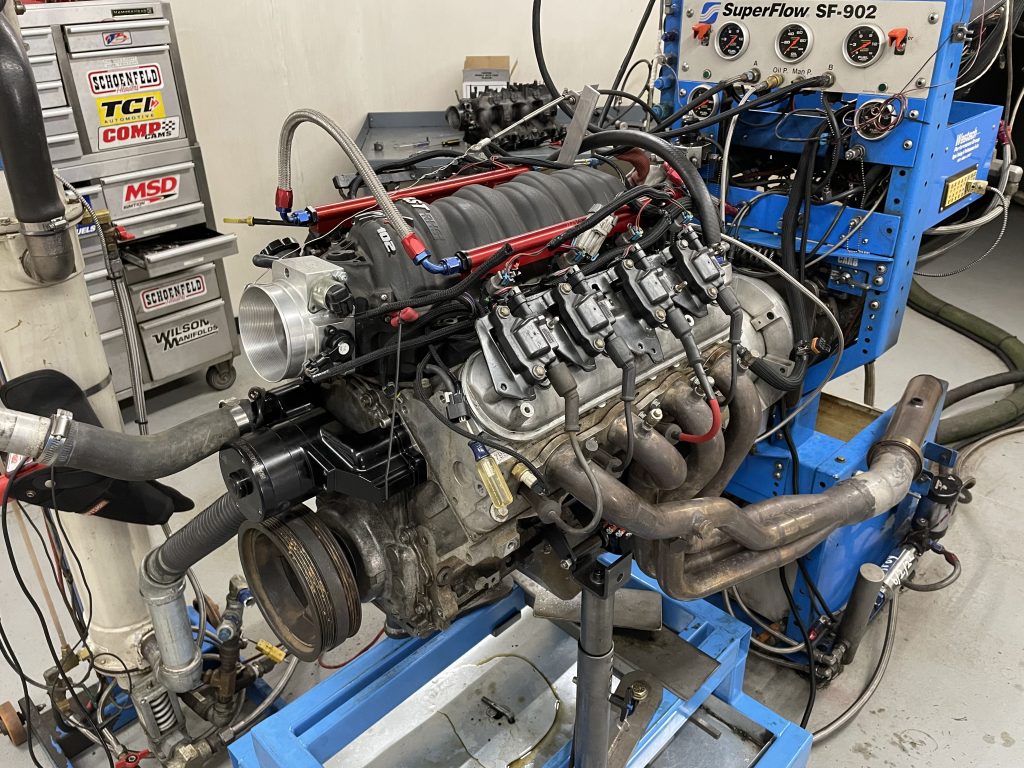
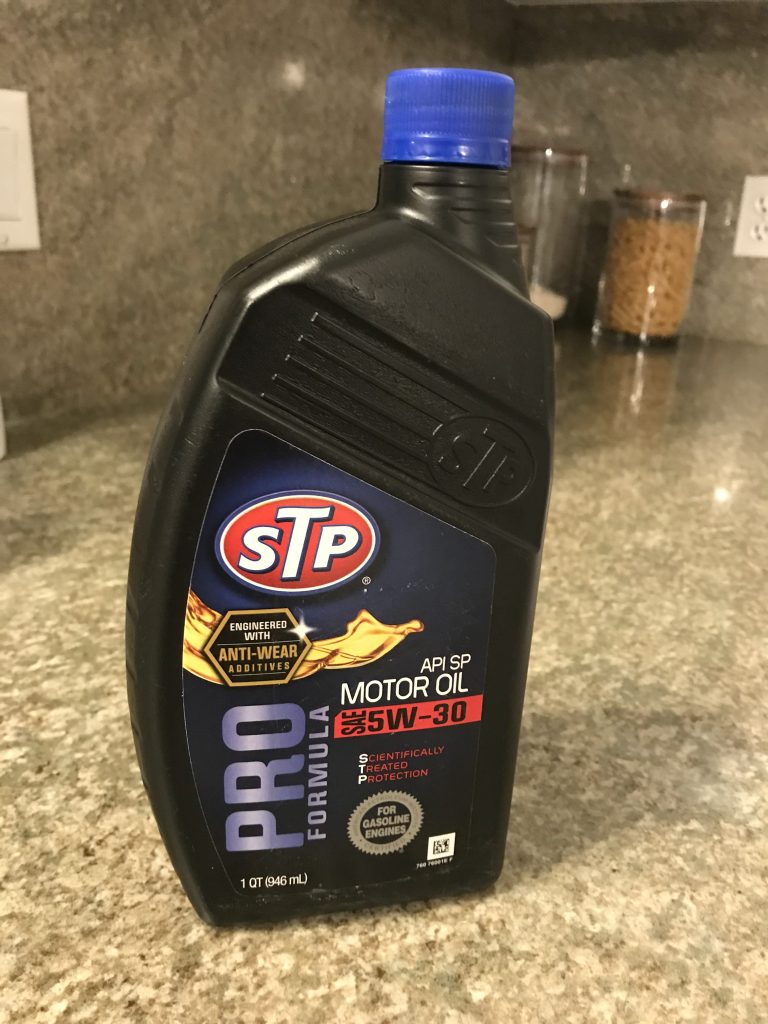
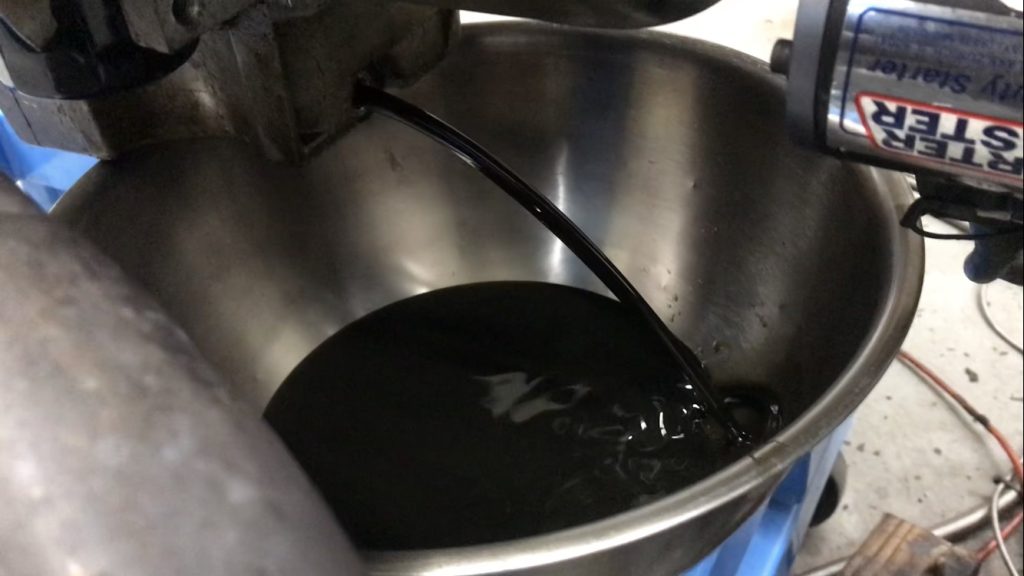
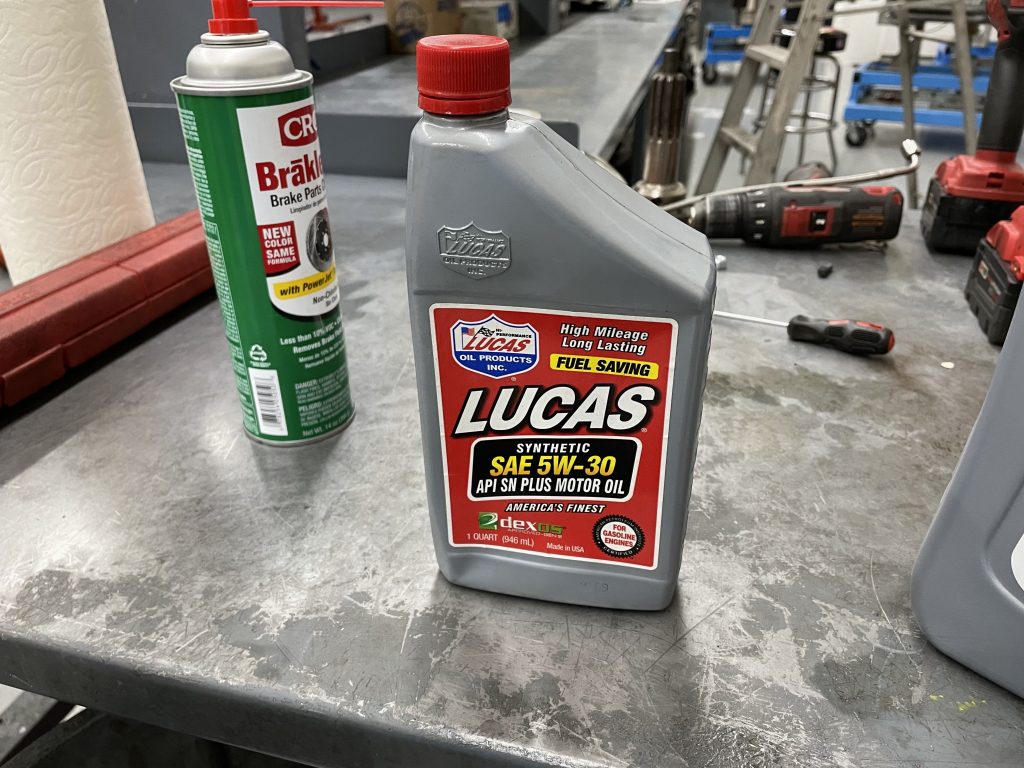
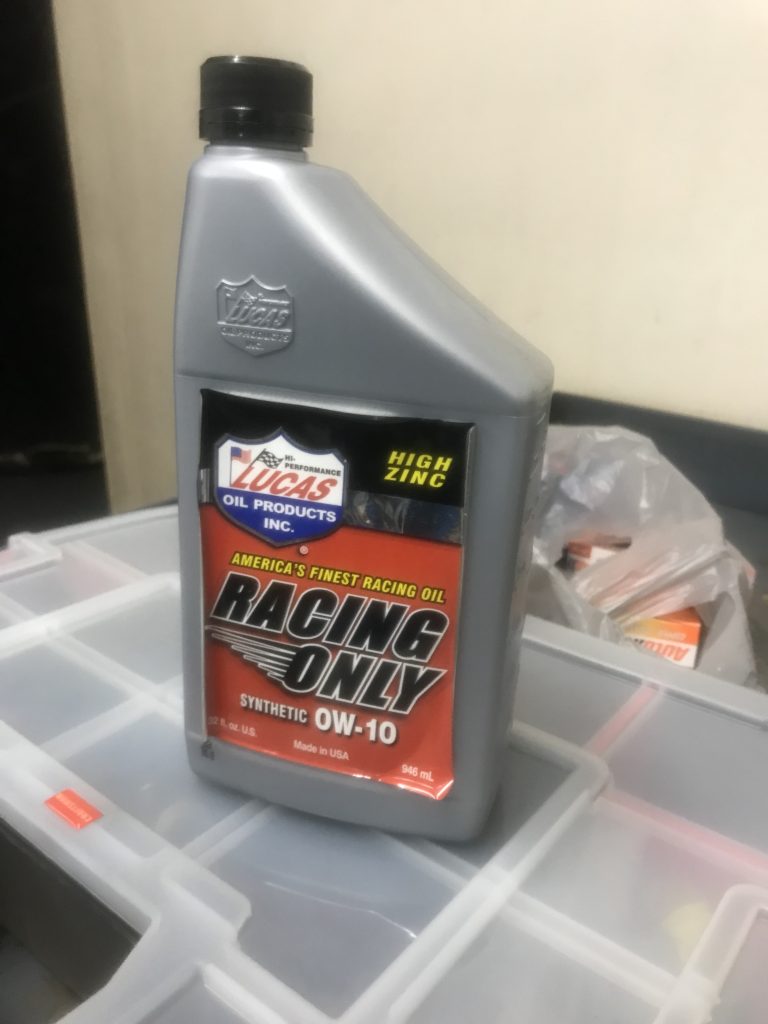
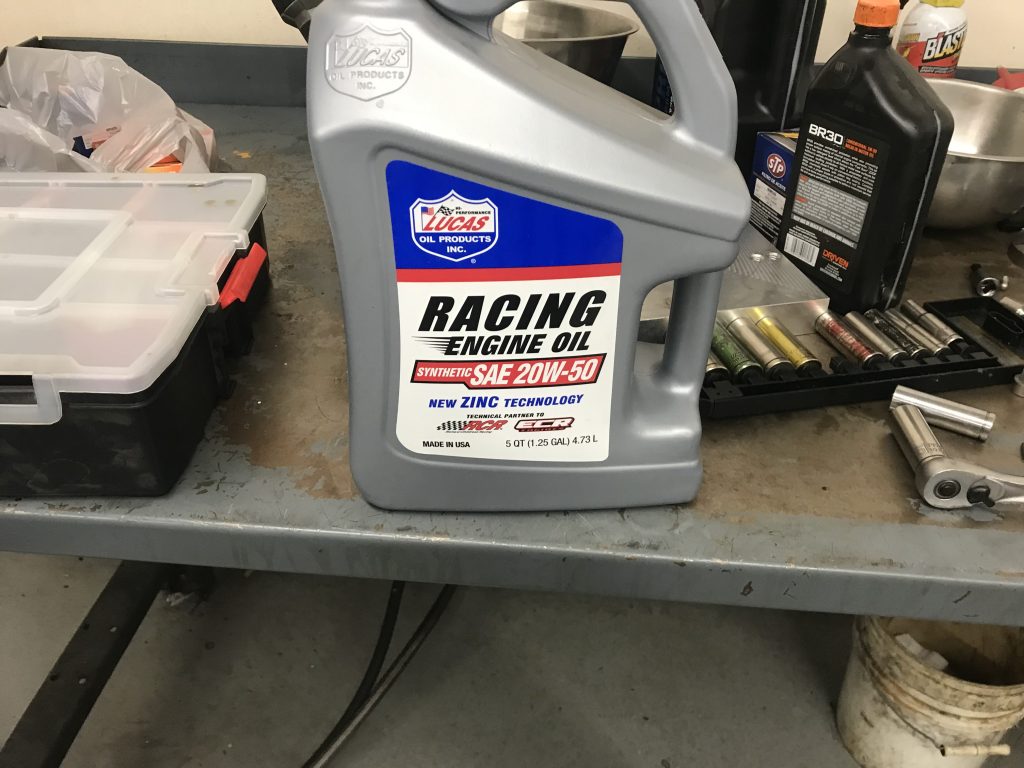
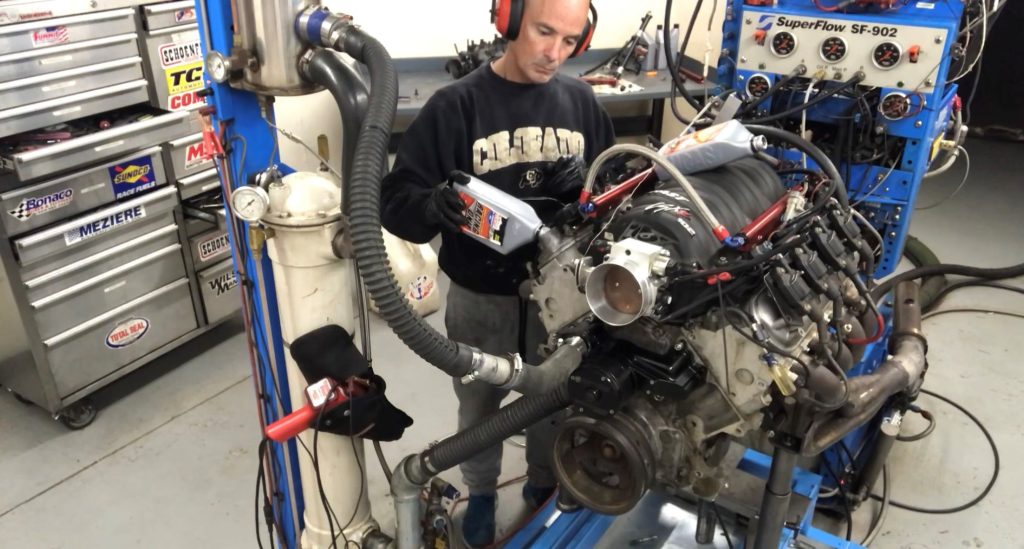

Great info Richard, especially since I am building a 5.3 LM4 copying your L33 build.
Question: does 20W50 cause issues with GM’s afm? Will it flow through the screens and pump up the lifters?
All your test proved is the lower, the viscosity, the lower the oil pressure the less horsepower the oil pump will consume. What about wear and engine life. Synthetic oils cannot be lumped into one common generalization.
Synthetic means man-made. Most synthetic oils are. Not even close to being the same. Not base stocks, not additive packages.
Instead of bargain hunting, the cheapest oil you can find. (Would you take your pride and joy and put the cheapest oil you can find on sale in it? No, Doesn’t make good sense) what people need to see is what is best for their baby. Compare a premium petroleum oil versus a premium synthetic oil like red line or Amsoil. That have a proven track history. Amsoil has been around since 1973.
I switched to haviland 5W-30 synthetic oil in my Chevy Colorado V6 I’ve had it in there since 29,000 I have 38,000 now and yellow light still hasn’t come on compared with the Walmart synthetic it’d come on at 6,000 mi so I’ll stick to the Havilland a lot better oil than the store brand
Pretty much everything I have read about synthetic oils is that the interval between oil changes is longer. All oil gets dirty, regardless of which type you use, and it’s those little particles that scratch the internal parts which leads to problems. So I use a good conventional oil and change it every 3000 miles or so which keeps clean oil in my vehicles.
Who runs their engine at that RPM. It’s unrealistic! At lower RPM the difference would be minimal. Also, what is man made oil made from? How can man make oil ? I won’t run my engine on corn or soy oil. If syn oil lasts longer, does that mean it picks up less residue? Was synthetic oil a planto wean us off real oil? ?
Man made oil is made in a lube lab. Its either a PAO or an Ester or a blend. They flow better and flow better at extreme temps. They have very high heat values too. Plus, they have much longer drain intervals. Owners at times get overly attached to specific brands. An example is Volvos with Castrol. This is pure nonsense. There is a reason that pure synthetic oils are more expensive.
Brian Bigelow
I have a 2002dodge ram 1500, with 180000 mile can I switch to synthetic oil with no harm to the eng.
If you want a leaky engine don’t do it edro just add a little Lucas oil stablelizer